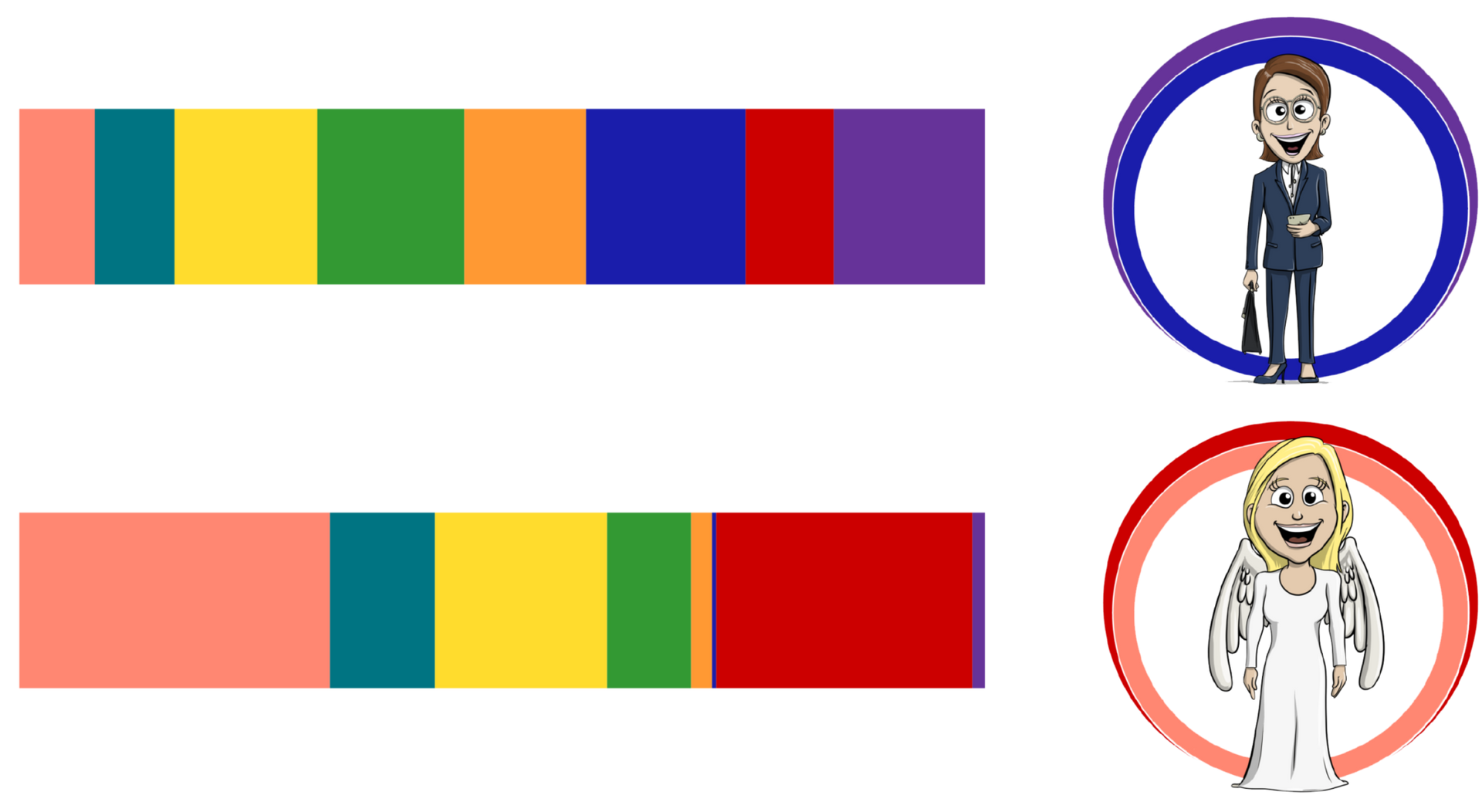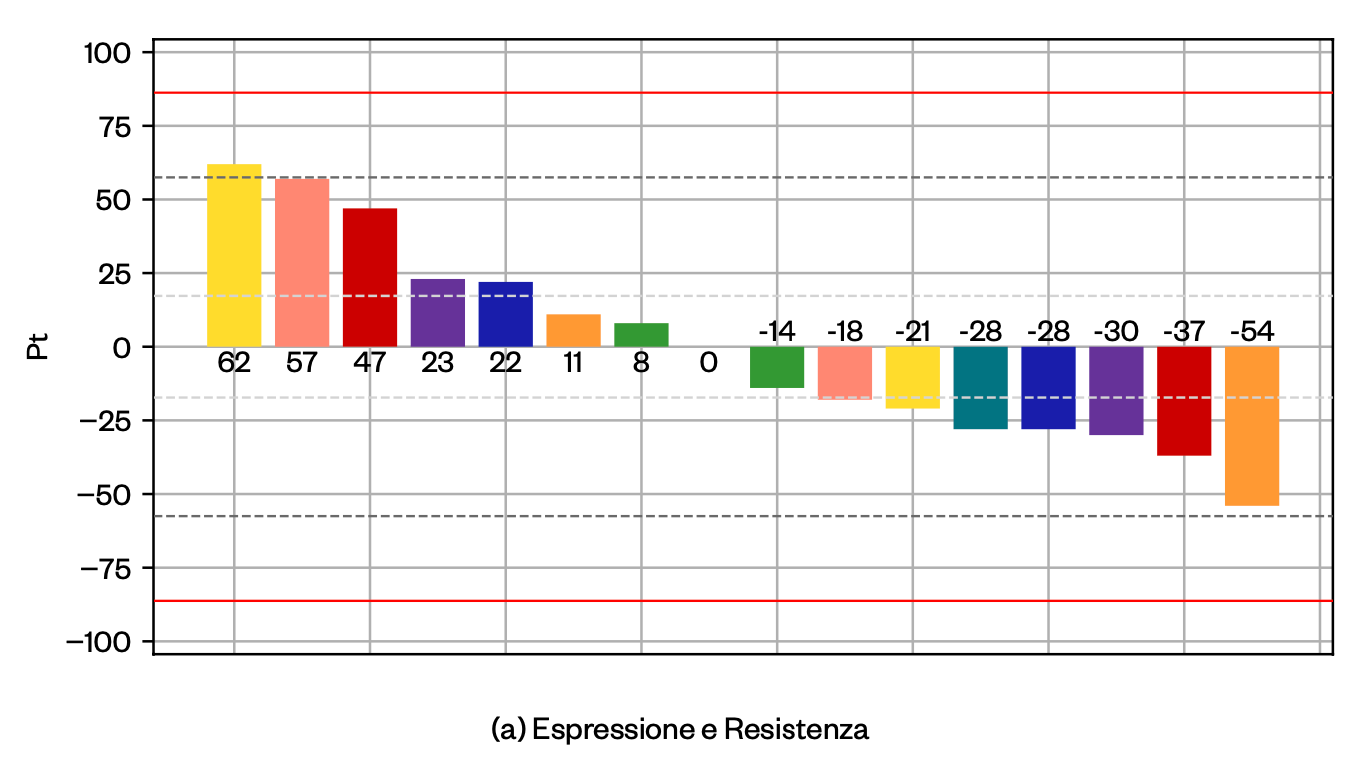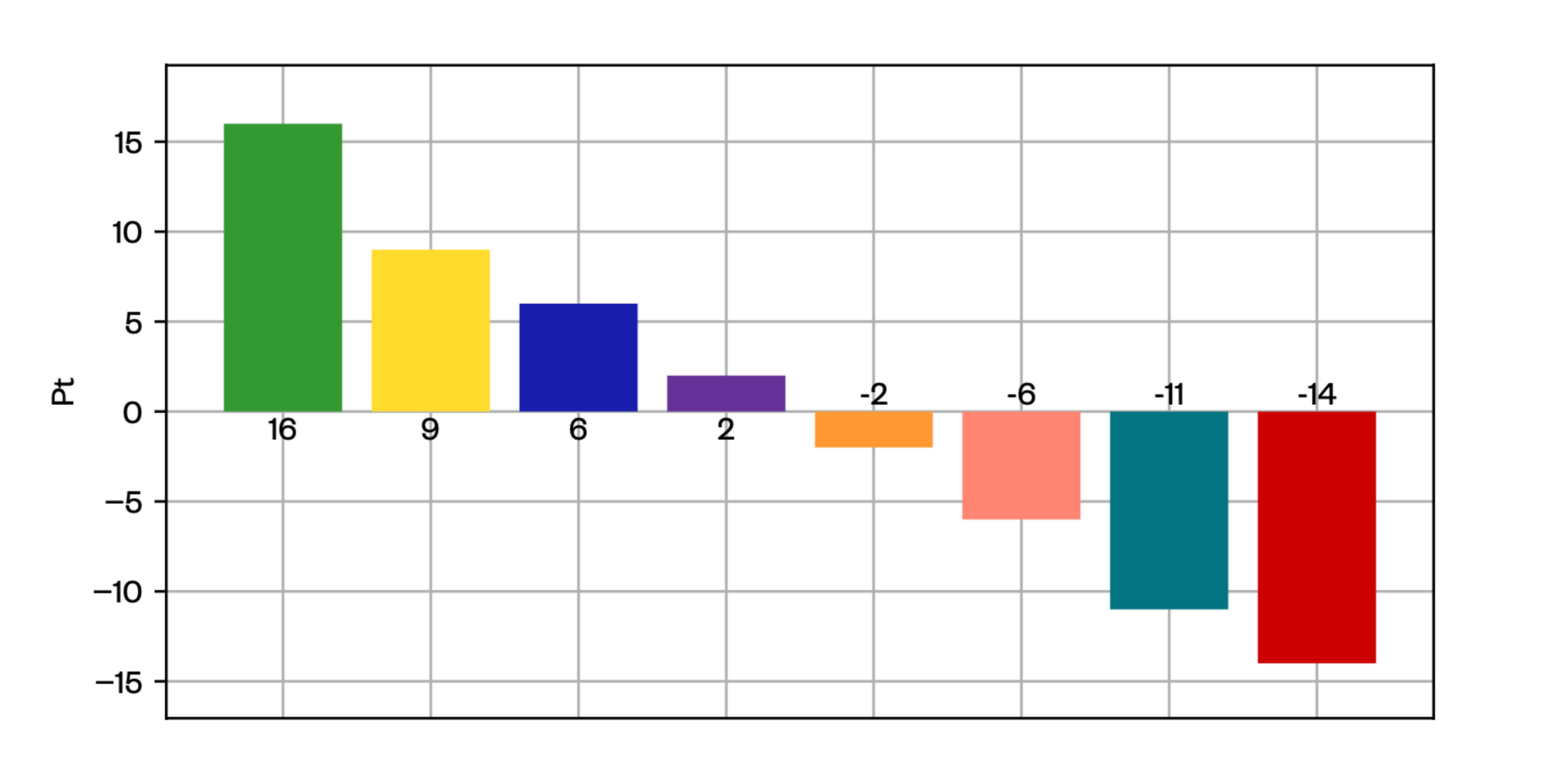Awareness Analysis per il team
Our Awareness Analysis can also be effectively applied to teams. The analysis quickly reveals where the team can express its full potential and where conflicts are likely. It also shows how to prevent tensions in advance, promoting harmonious and productive work.
the method
HOW DOES THE ANALYSIS PROCEDURE WORK?
- Online questionnaire – simple and intuitive
Each participant completes a short online questionnaire, answering 21 statements and situations. The process is completely intuitive and takes about 20 minutes. - Analysis and personalized reporting
The collected data is analyzed to define individual levels of awareness and their interactions. Our analysis is based on Clare W. Graves's theory of 8 levels of awareness, represented graphically through a color system. - Clear and concrete visualization
Through visual graphics and symbolic characters, we make the internal dynamics and main strengths and resistances easily understandable. - Evaluation Interview
Subsequently, one of our qualified trainers discusses the results with the participant, offering practical recommendations and ideas for personal or professional development.
the team report
Team Overview
Each team member is assigned a symbolic character and displayed with their personal color code, based on their prevailing level of awareness.

EXPRESSIONS AND RESISTANCES
Which "glasses" does the team as a whole prefer to wear? Which perspectives are adopted less frequently, and which ones does the group resist? Awareness Analysis helps understand these dynamics and identify the motivations behind preferences and resistance, opening up new possibilities for growth and collaboration.

INDICATOR OF ENVIRONMENTAL POTENTIAL
When a team is forced to collaborate with stakeholders who drain its energy, performance suffers. Our potential environment indicator clearly shows where the team can best express its capabilities and where it struggles, explaining the reasons.

Conflict Analysis
In our analysis, each team member is compared to all the others, to examine individual dynamics within the group. For example: how do the awareness levels of collaborators B and C influence the behavior of collaborator A?
The analysis highlights potential communication bottlenecks, the likelihood of conflict, and points of friction between colleagues, allowing targeted intervention and prevention of critical situations. This way, collaboration becomes more harmonious and communication more effective.





